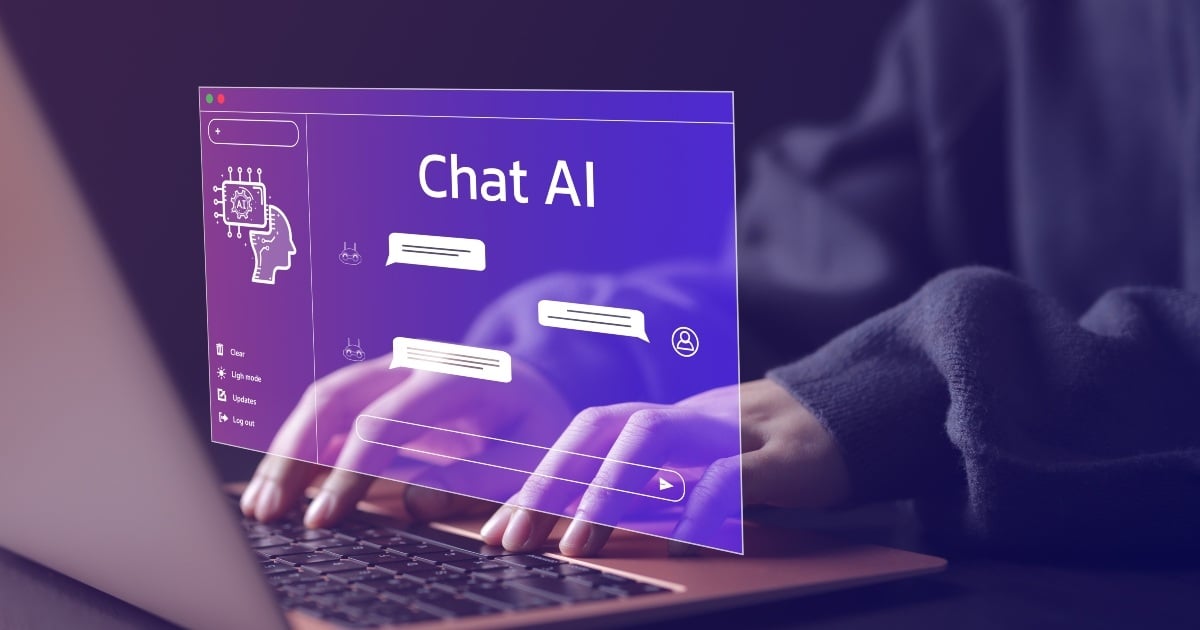
The rise of AI-powered search engines, particularly Google's AI Overviews (part of Search Generative Experience or SGE), is revolutionising how businesses approach content creation and optimisation. It means adapting to a new framework where AI curates, interprets, and delivers content to users in more dynamic and intuitive ways.
For B2B companies, this shift represents both an opportunity and a challenge. Reaching decision-makers will require more effort than just well-written content, it will demand a deep understanding of how search engines, particularly Google — interpret, rank, and display information using AI algorithms. With Google evolving into a more sophisticated, AI-driven search engine, traditional keyword-heavy SEO strategies simply won't cut it anymore. The key now is to ensure that your content is contextual, relevant, and well-structured in a way that aligns with how Google’s AI systems process, understand, and rank information.
This comprehensive guide will walk you through everything you need to know about optimising content for Google AI Overviews. It’s tailored for businesses looking to rank well in AI-generated search results, increase their online visibility, and maintain a competitive edge.
What Are Google AI Overviews?
Google AI Overviews are concise, AI-generated summaries that respond to complex user queries by synthesising information from multiple high-quality sources. These summaries are designed to give users quick, accurate, and comprehensive answers right at the top of the search results page, reducing the need for users to click through to multiple websites. Think of them as a step beyond Google’s Featured Snippets or Knowledge Panels, as they offer richer, more context-driven responses.
For B2B companies, especially those with long sales cycles and highly technical products, Google AI Overviews provide an opportunity to showcase your thought leadership and build trust with your audience. However, they also pose a challenge — as users may get the answers they need without clicking through to your website, which is likely to reduce organic traffic. "On average, sites could see about a 30% decline in organic search clicks, and every single website is going to feel the pain.” - Search Engine Land.
Why Optimising Content for Google AI Is Crucial for B2B Success
Unlike B2C, B2B sales cycles are lengthy, often spanning months with numerous touchpoints. The stakes are higher, decisions are more complex, and buyers expect highly relevant, tailored content that directly addresses their pain points. Google’s AI, through algorithms like RankBrain, BERT, and MUM, focuses on interpreting content based on context and user intent rather than just keywords. This makes it essential for us to create content that addresses specific business needs, framed in a conversational and highly accessible manner.Google’s shift towards AI means that content must:
- Match searcher intent more than ever.
- Be accessible in multiple formats (text, images, video).
- Prioritise context and relevance over keyword density.
Optimising Content for Google AI: A B2B Strategy
To capitalise on the growing presence of Google AI Overviews, you need a content strategy that aligns with both AI algorithms and user behaviour. Here are key steps to follow:
1. Focus on Creating High-Quality, Authoritative Content
Content is still king, but now more than ever, it needs to be credible, detailed, and valuable. Google AI values content that demonstrates experience, expertise, authority, and trustworthiness (commonly referred to as the EEAT principle). The more authoritative your content, the higher your chances of being featured in AI overviews. For AI Overviews, the content must answer complex queries with thorough explanations. Consider developing the following types of content:
- Whitepapers and Technical Guides: These provide in-depth analysis and data, which AI can pull from to create summaries for more technical or industry-specific queries.
- Case Studies and Success Stories: Showcase how your products or services solve real-world problems. This not only builds authority but also provides Google with rich content to pull into AI Overviews.
- Long-Form Articles and Research: Google’s AI thrives on content that dives deep into a topic. Your long-form content should comprehensively cover topics relevant to your audience’s pain points, while also demonstrating expertise in the field.
Pro Tip: Reference credible sources and authoritative websites to enhance your content’s credibility. For instance, if you’re writing about B2B marketing strategies, citing reports from Gartner or Forrester will strengthen your content’s legitimacy in the eyes of Google’s AI.
2. Optimise for AI with Structured Data
One of the most effective ways to help Google understand your content is through structured data (schema markup). Schema markup is code added to your website that provides search engines with clear, structured information about your content. This is especially useful for B2B companies with technical content, as it helps Google’s AI digest and summarise the information more easily.
Common schema types to consider include:
- FAQ Schema: If your content answers common industry questions, using an FAQ schema can help Google extract the relevant information for AI Overviews.
- How-to Schema: Step-by-step guides can be marked up with this schema, helping Google surface your content for queries related to processes or operational improvements.
- Product Schema: For B2B companies with complex products, adding product schema can help Google AI better understand the features and benefits of your offerings.
3. Align Content with User Intent
As Google AI Overviews are designed to provide fast, accurate answers, understanding the intent behind user queries is critical. Content that aligns with specific user intents is more likely to be featured in an AI Overview. For B2B businesses, user intents often fall into these categories:
- Informational: Users are looking for answers or insights on a specific topic.
- Navigational: Users want to find a particular page or resource.
- Transactional: Users are seeking a product or service and are likely ready to buy.
By conducting thorough keyword and intent research, you can identify what your audience is searching for and tailor your content accordingly.
4. Improve Readability and Structure
How you present your content is just as important as what you write. Google AI favours content that is easily digestible and well-structured. Break down your information into clearly defined sections with headers and sub-headers. This not only makes it easier for readers to navigate but also allows AI algorithms to understand and extract relevant information more efficiently.
- Use Q&A Formats: Including frequently asked questions (FAQs) within your content aligns perfectly with how AI processes queries. Google AI often seeks out question-and-answer formats because they mirror the way users ask questions. When writing, think about what your audience might be asking and provide straightforward answers.
- Short Paragraphs and Bullet Points: AI reads content much like a human does — which means shorter, concise paragraphs and bullet points improve clarity and make the content more scannable. This structure boosts your chances of being featured in AI-generated summaries or highlighted answers.
5. Emphasise Intent-Based Keywords and Natural Language
Keyword stuffing is dead. AI models like Google’s no longer rely on exact-match keywords but focus on understanding user intent through natural language processing (NLP). This means your content should be written in a way that sounds natural, answering queries in a conversational tone.
- Pro Tip: Optimise for semantic SEO. Instead of focusing on exact keyword repetition, think about the broader topic and the various ways people might search for it. For example, if your target audience is B2B marketing agencies, they may search for terms like “B2B lead generation,” “B2B marketing strategies,” or “top-rated B2B marketing agencies.”
- Research Tools: Use tools like Google Trends and AnswerThePublic to find related phrases, questions, and searches relevant to your content. This will help you anticipate user intent and ensure your content answers as many related queries as possible.
6. Improve Your Content’s EEAT (Experience, Expertise, Authority, Trustworthiness)
Google’s search models, including AI, give priority to content that adheres to its EEAT guidelines. For B2B companies, this translates into creating content that highlights your expertise, authority in the field, and the trustworthiness of your brand.
- Expertise: Position your company as a thought leader in your niche. This could involve publishing detailed whitepapers, industry reports, or comprehensive blogs and guides (like this one). You can also cite experts or link to research from respected institutions to boost credibility.
- Authority: Incorporate elements like case studies, client testimonials, and collaborations with recognised brands. For instance, if you’ve worked with industry-leading companies, mention them in your content.
- Trustworthiness: Transparency is crucial. Make sure your website includes a clear privacy policy, easy-to-find contact information, and user reviews. AI engines weigh these factors when determining whether to feature your content.
7. Incorporate Data-Driven Insights
AI-driven search engines look for data that reinforces the trustworthiness of your content. Back up your statements with real numbers and case studies, particularly in the B2B space. When AI models scan your content, they favour information that comes with empirical evidence.
Pro Tip: Use statistics, graphs, and charts to support your claims. A study from HubSpot showed that content with embedded data points and real-world case studies tends to rank higher in AI-overview-driven search results.
8. Ensure Technical SEO is in Place
AI models still rely heavily on the fundamentals of SEO. This means that even though AI generates overviews based on the relevance of the content, your website must still be technically sound to ensure it’s crawled and indexed properly.
- Optimise Page Speed: Slow websites rank lower, even in AI-driven searches. Use tools like Google PageSpeed Insights to test and optimise your site’s loading times.
- Use Structured Data: Implement schema markup on your pages. This helps Google understand the structure and meaning of your content, which is crucial for AI-driven features like rich snippets and AI overviews.
- Mobile Optimisation: Google’s AI focuses on delivering the best user experience, which means prioritising mobile-friendly websites. Ensure your website is responsive and easy to navigate on mobile devices.
9. Adapt Your Paid Marketing Strategies
While organic search may see some changes due to AI Overviews, your paid search strategy also needs to adapt. As AI Overviews give users more immediate answers, paid ads will need to focus on deeper engagement rather than just top-level queries. For example:
- Target more specific long-tail keywords: As AI handles broader queries, your paid ads can target users who are looking for more in-depth content or who are further along in the decision-making process.
- Create hyper-targeted ad copy: Focus on addressing specific pain points or offering unique insights that AI summaries can’t provide.
10. Monitor and Refine Your Strategy
Google AI Overviews are still evolving, and the algorithms that drive them will continue to change. Use tools like Google Search Console and Google Analytics to monitor your performance in AI Overviews. Look for trends in traffic, engagement, and rankings, and adjust your strategy as necessary.
By keeping an eye on how Google AI Overviews are impacting your site, you can stay agile and ensure your content continues to rank well, even in a changing search landscape.
What’s Next for AI-Powered Content?
Google’s AI Overview is just the beginning of the AI search revolution. As AI models become more sophisticated, we can expect them to curate even more personalised and context-driven results. For B2B companies, this presents a massive opportunity to dominate the digital landscape by crafting content that aligns not just with user intent, but also with AI’s understanding of context and authority.
By following the steps in this guide, you can ensure that your content ranks well in AI-driven searches and meets the expectations of today’s tech-savvy B2B audience. The Fileroom team are passionate about helping people and organisations with a transformation mindset who are genuinely ambitious about reaching their goals. If you're interested in learning how we can help you optimise existing content and create new material that genuinely addresses the needs of your audience while adhering to best practices for AI-generated results, connect with us here.



.png)






